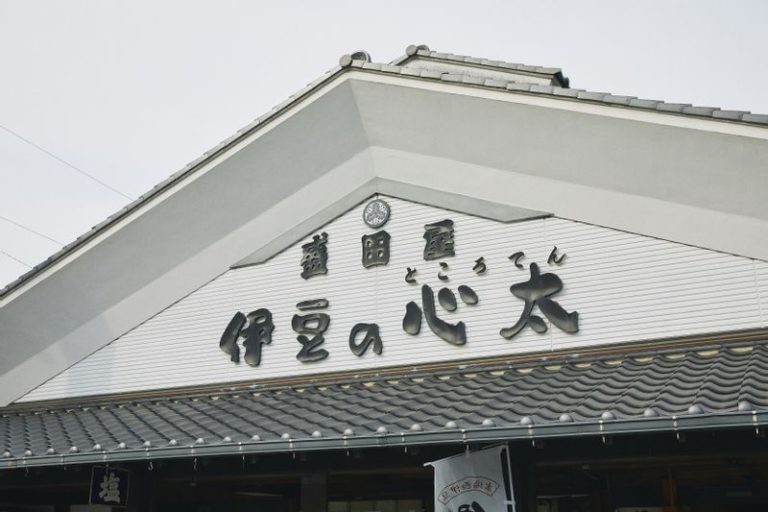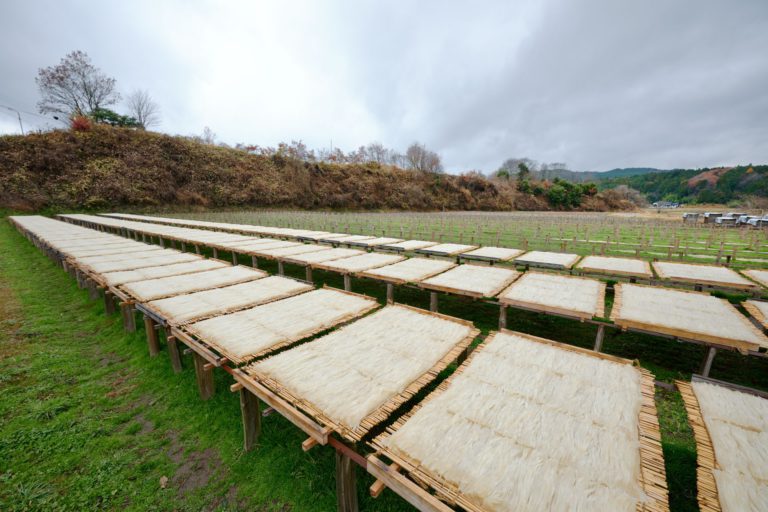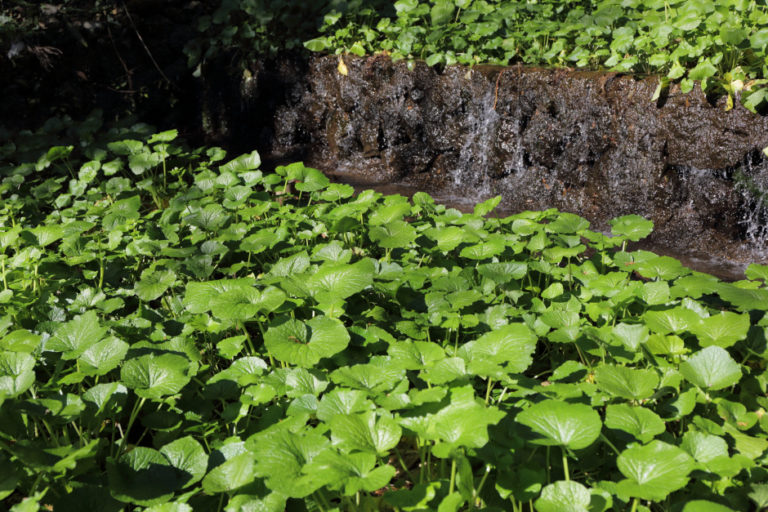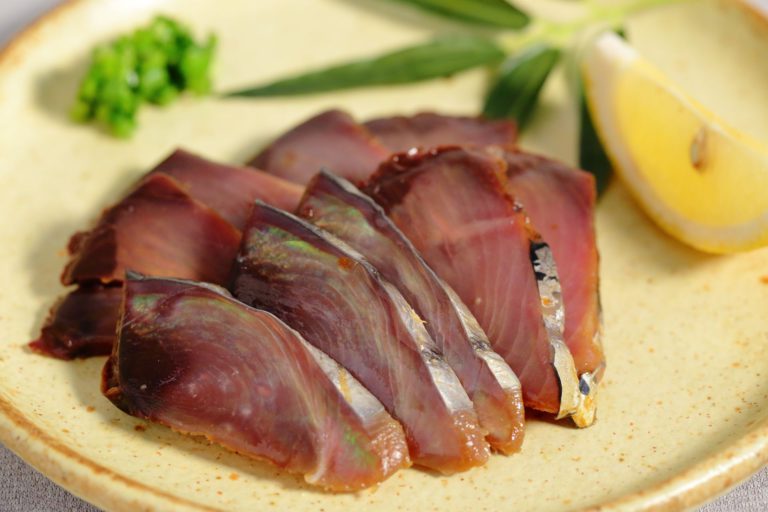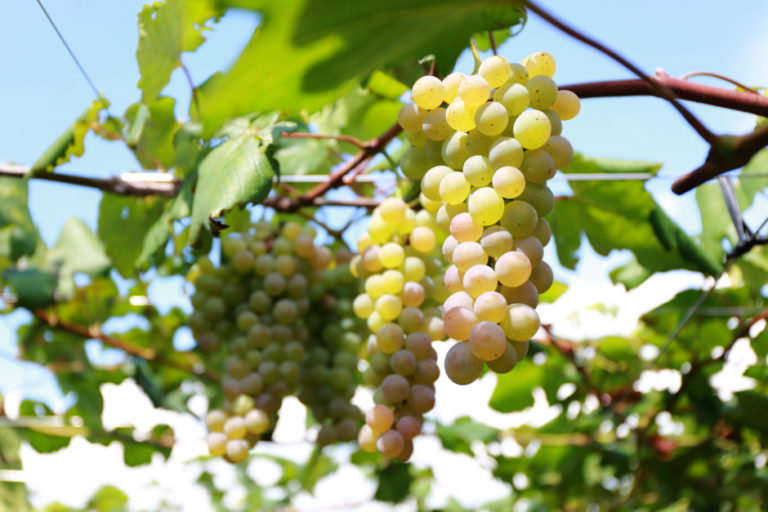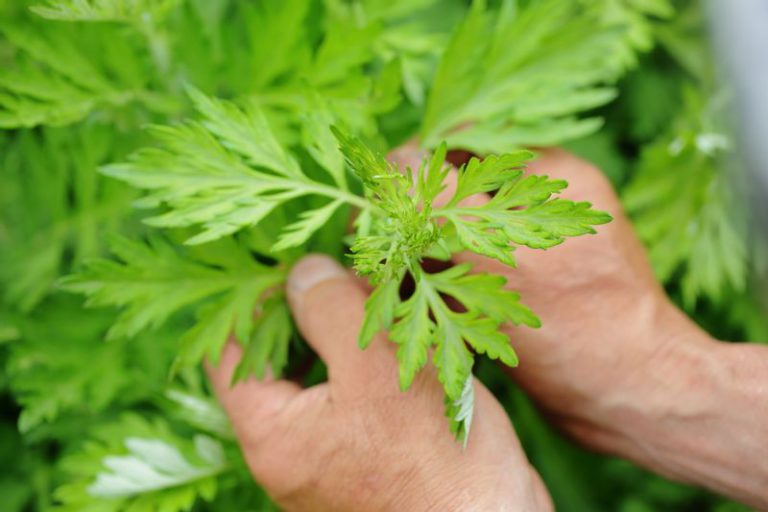Traditional Harvesting Brings Izu Tokoroten with the Flavor of Tengusa
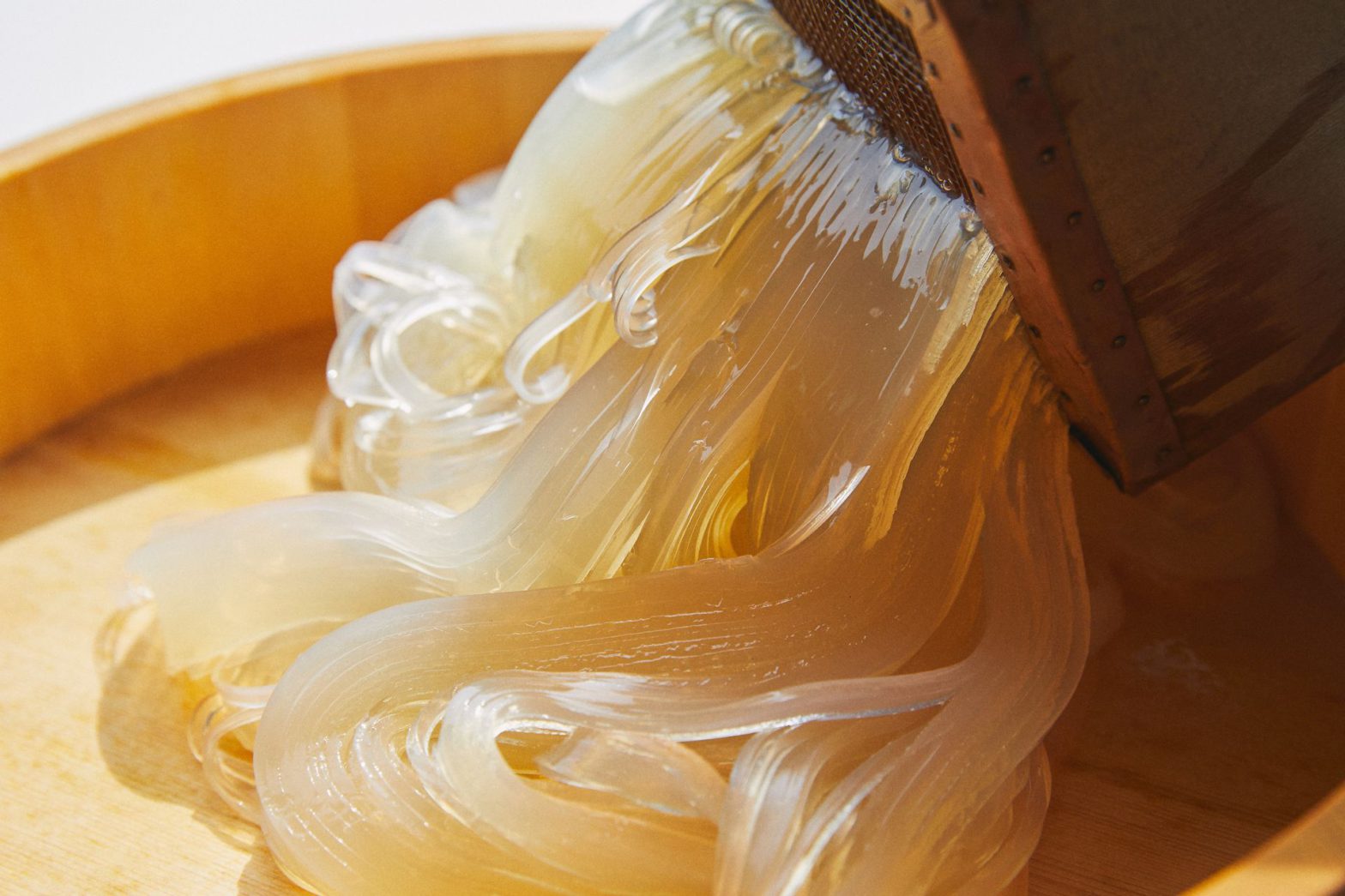
What makes Nishi Izu's tengusa the finest of its kind?
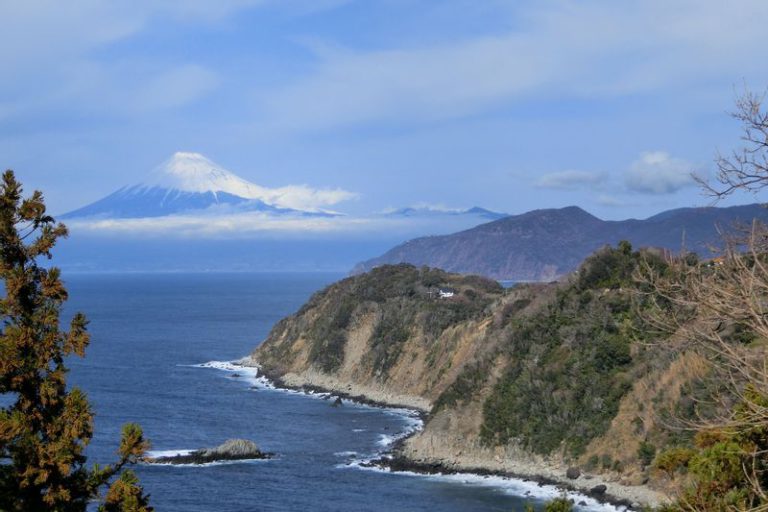
The area known as Nishi-Izu on the Izu Peninsula in Shizuoka Prefecture has been known as a place of scenic beauty facing Suruga Bay and affording a view of the setting sun on the west side of Mount Fuji. In the sea, the subsoil water of Mount Fuji flows in and merges with the Kuroshio Current from the south. This creates fertile fishing grounds in Suruga Bay, and the complex sawtooth coastline also creates an ideal environment for fish, shellfish and seaweed.
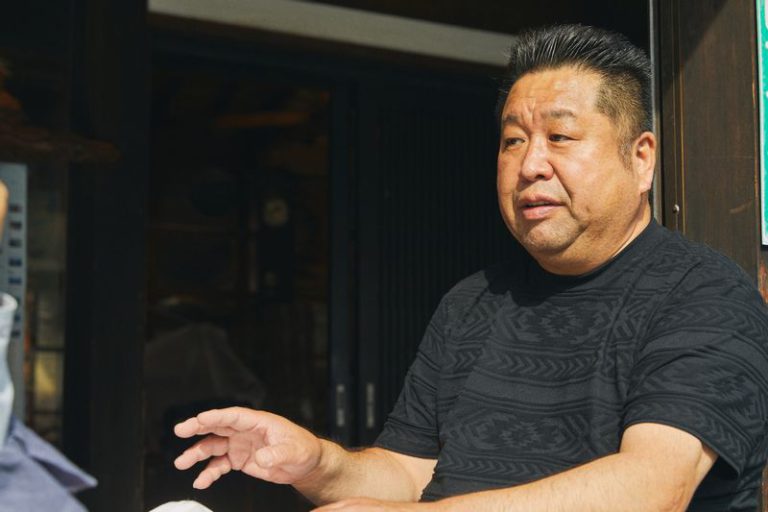
“Among the Nishi-Izu tengusa, Yagisawa’s tengusa in particular is traded as a premium quality product. There are two reasons for this: first, the high quality of the tengusa, which is unique to Nishi-Izu’s topography, and second, the traditional harvesting practices that have been maintained to ensure the quality of the tengusa is not compromised,” said Takashi Suzuki of Izu no Tokoroten Moritaya, which has been making tokoroten with a focus on using locally-grown tengusas.
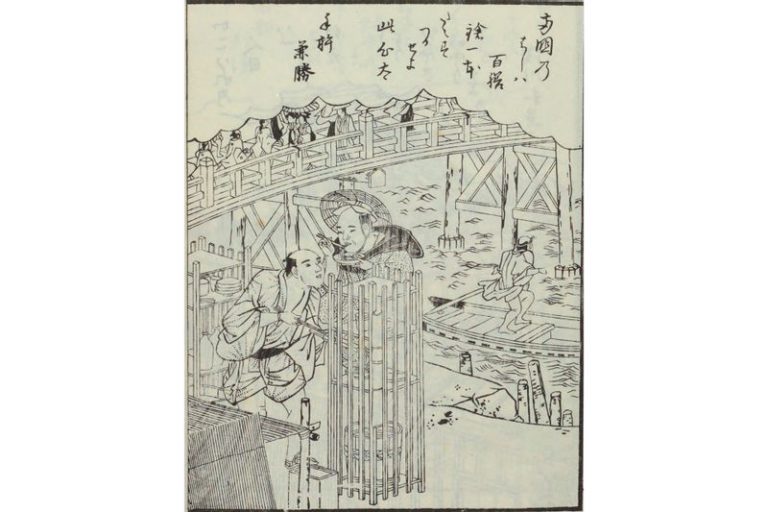
Source: National Diet Library Digital Collections
The kanji “心太” reads tokoroten. The origin of the name has been attributed to the following theory. During the Heian period (794-1185), people began to call it kokorofuto, meaning hardened rice cake. Later, in the Muromachi period (1336-1573), it morphed to kokorotei, and then to kokoroten, then to tokoroten. The name tokoroten is thought to have become common during the Kan’ei period of Edo (1624-1644), but the kanji remained unchanged.
What is traditional torigusa harvesting?
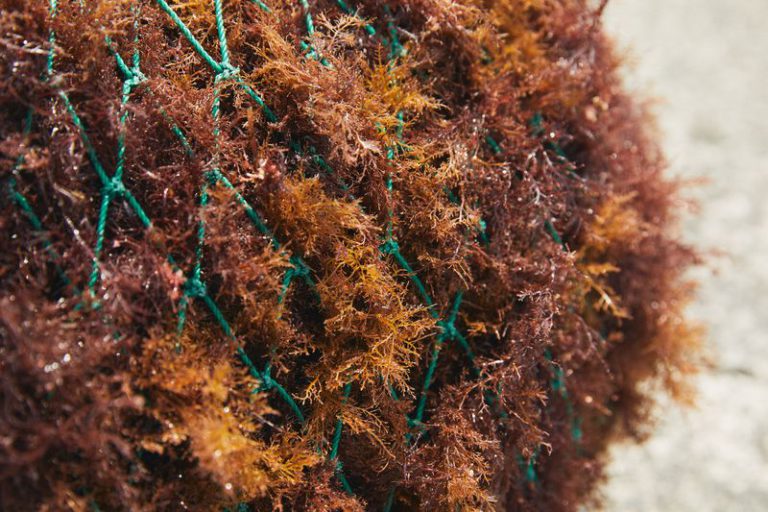
On the western side of the Izu Peninsula, there is a reef zone where the water temperature is consistent, and sunlight penetrates the shallow water, about 30 meters deep, which is ideal for tengusas to grow. As the tengusas grow and attach themselves to the reef, they become thick and full of nori, the agar-like substance of tengusa.
Tengusa harvesting takes place from early spring to summer. There are two types of harvesting methods: the yorigusa method, which involves raking up the tengusas that have detached from the rocks and drifted to the shore, and the torigusa method, which involves going offshore by boat and diving to check the color, sheen and growth in the sea to collect only the best quality tengusas. Naturally, the quality is better with the torigusa harvesting method, and it is no exaggeration to say that Nishi-Izu region’s tengusas are considered to be the best because of the people who carry on this traditional harvesting method that has been practiced since the beginning of the Showa period (1926-1989).
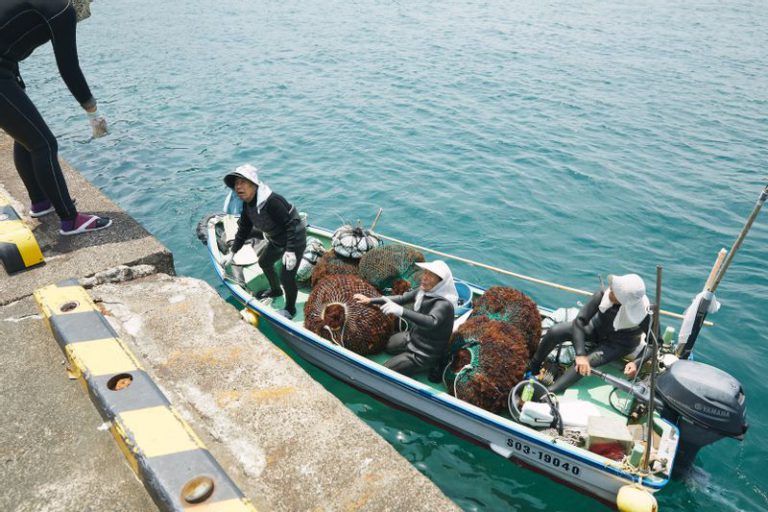
Women are mainly responsible for harvesting. A dozen or so ama divers were from the Toi, Koshimoda and Yagisawa areas on the west coast of Izu, and the group out fishing that day consisted of three experienced ama divers in their 70s and 80s. Men who have retired from fishing also go out to harvest tengusas. They harvest for roughly two hours, from 8:30 to 10:30 a.m. Any later, the waves become choppy, making it difficult for them to work 30 meters offshore in the ocean.
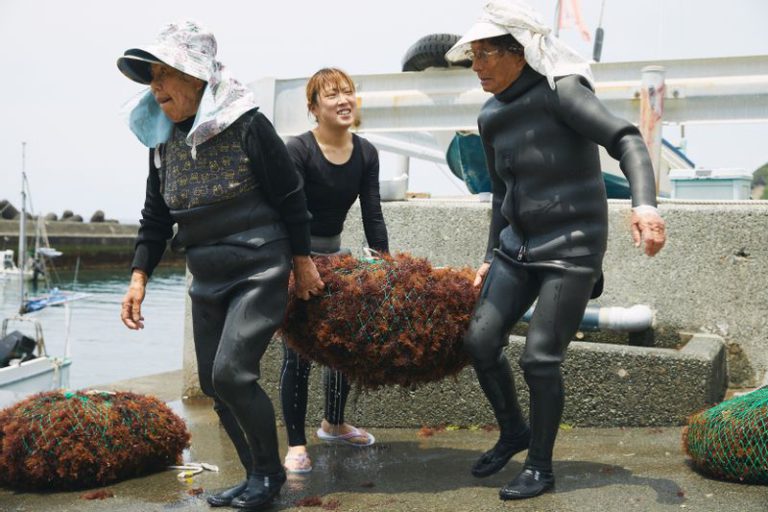
“There aren’t many today. The waves are so big that there are fewer than usual,” said Fumiko Suzuki, who has been an ama diver for 50 years in Koshimoda. Even when the tengusa harvesting season opens in early spring, the number of days they are allowed to harvest is limited due to ocean conditions and poor weather. Fumiko and her team returned with a net full of glistening tengusas, and with the help of the fishermen, they continued their work with a steady gait.
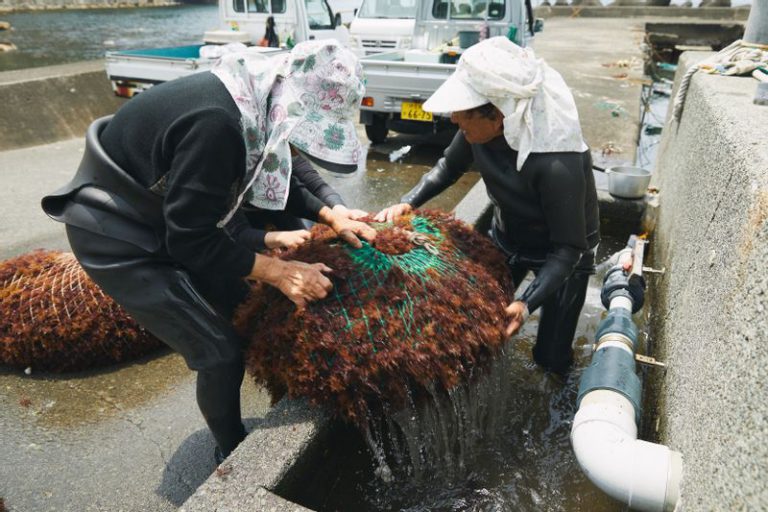
Once hauled out of the water, the tengusas were rinsed vigorously in freshwater to desalinate. This desalination is also an important process that affects the color and flavor of the tengusas. Fumiko said, “This is how we get the salt out of the tengusas, by stamping on them with our feet, putting our weight on them. This water is cold.” The communal water basin, which draws water from a spring below the cliff, is called tengusas’ “araiba (wash station),” and the temperature is said to be constant all year and never dries up. It is used not only for washing tengusas but also for cleansing the body after getting out of the sea.
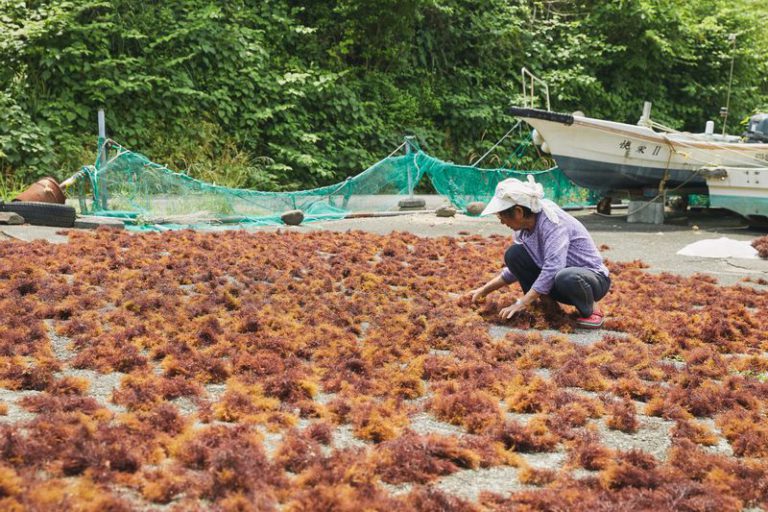
In the afternoon, the tengusas were dried in the sun. Drying gives them body and springiness. The reddish-brown tengusas gradually turned white when water was poured over them. When the surface dried, they were turned over.
“The tengusas are spread out like this, so they don’t overlap. It’s surprisingly tricky and requires skill”, said Fumiko.
In the next stage of the process, the entangled other seaweed, crabs and bits of oyster shells attached to the tengusas were cleaned off to further improve quality.
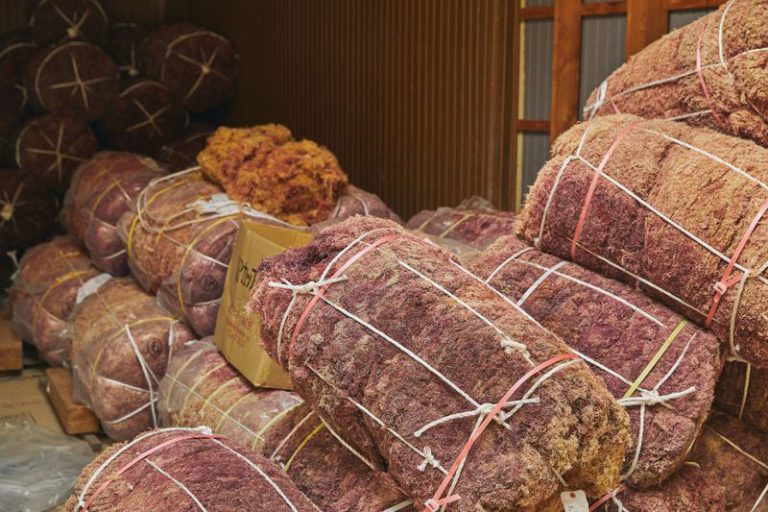
Fumiko and her team’s work ended here, and the tengusas were packed in containers, awaiting bids from traders. The tengusas collected from various fishermen’s cooperatives are bought and sold at trade auctions held several times a year. Tengusas washed and dried in the sun, repeatedly to a beautiful amber color, are known as sarashi tengusa and are traded at a high price. This Nishi-Izu region, in particular, often deals in high-end sarashi tengusas. When Moritaya’s Suzuki showed us the storage area, we found several large bundles of tengusas, sorted into different grades.
Additive-free tokoroten made with confidence in the ingredients
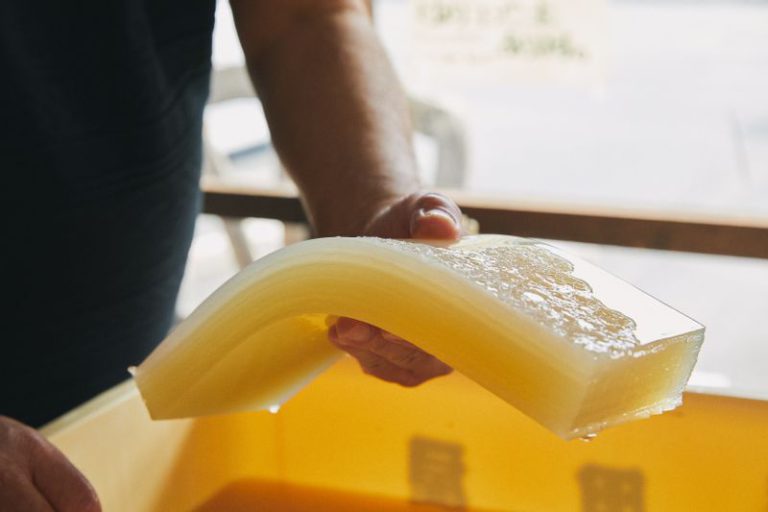
At the end of the visit, we were served Moritaya’s signature tokoroten. Tokoroten is about enjoying the natural taste of tengusa. Tengusas harvested in the Nishi-Izu region are boiled in spring water from the foot of Mount Amagi, and the strained liquid is simply allowed to cool and set. The tokoroten had tengusas’ sweetness and aroma and was also exceptionally firm. “Our tokoroten is so elastic that you can even make a bowknot with it,” said Suzuki, giving us a demonstration.
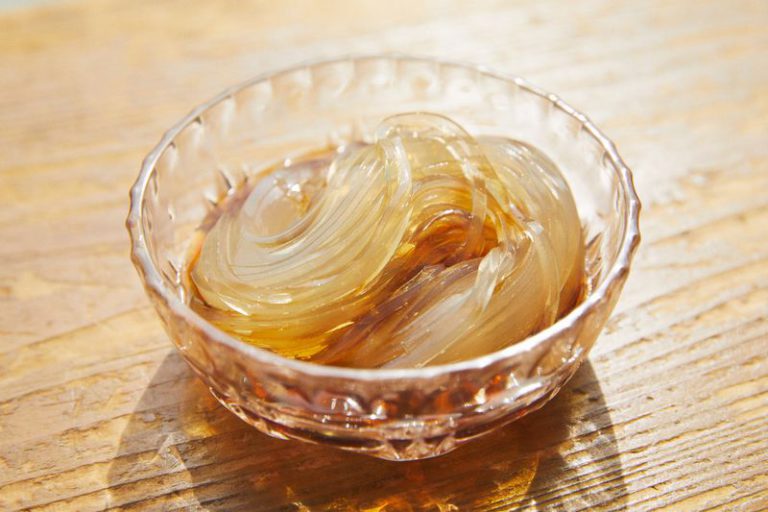
You can taste the delicate flavor of the sea even if you eat it plain, but the best way to eat it is with sambaizu (dashi with rice vinegar) and a little mustard paste to your liking. These days, many customers eat it with kuromitsu (dark sugar syrup) or kinako (soybean flour), Kansai-style, which have become popular items on Moritaya’s menu. Tokoroten is available in a choice of thicknesses from coarse to extra-fine as gifts.
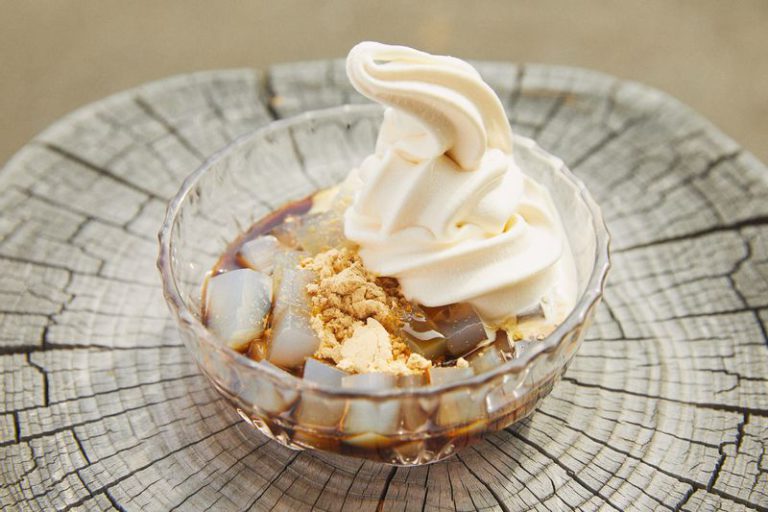
The traditional food, tokoroten, has been enjoyed in Japan since ancient times. It is a healthy and tasty snack alternative to keep you cool in summer. You can enjoy the aroma of the tengusa as it is, eat it like sweets on top of ice cream, or mix it with mayonnaise or dressing for a salad. Among the many variations, how about finding your favorite way of enjoying tokoroten?

